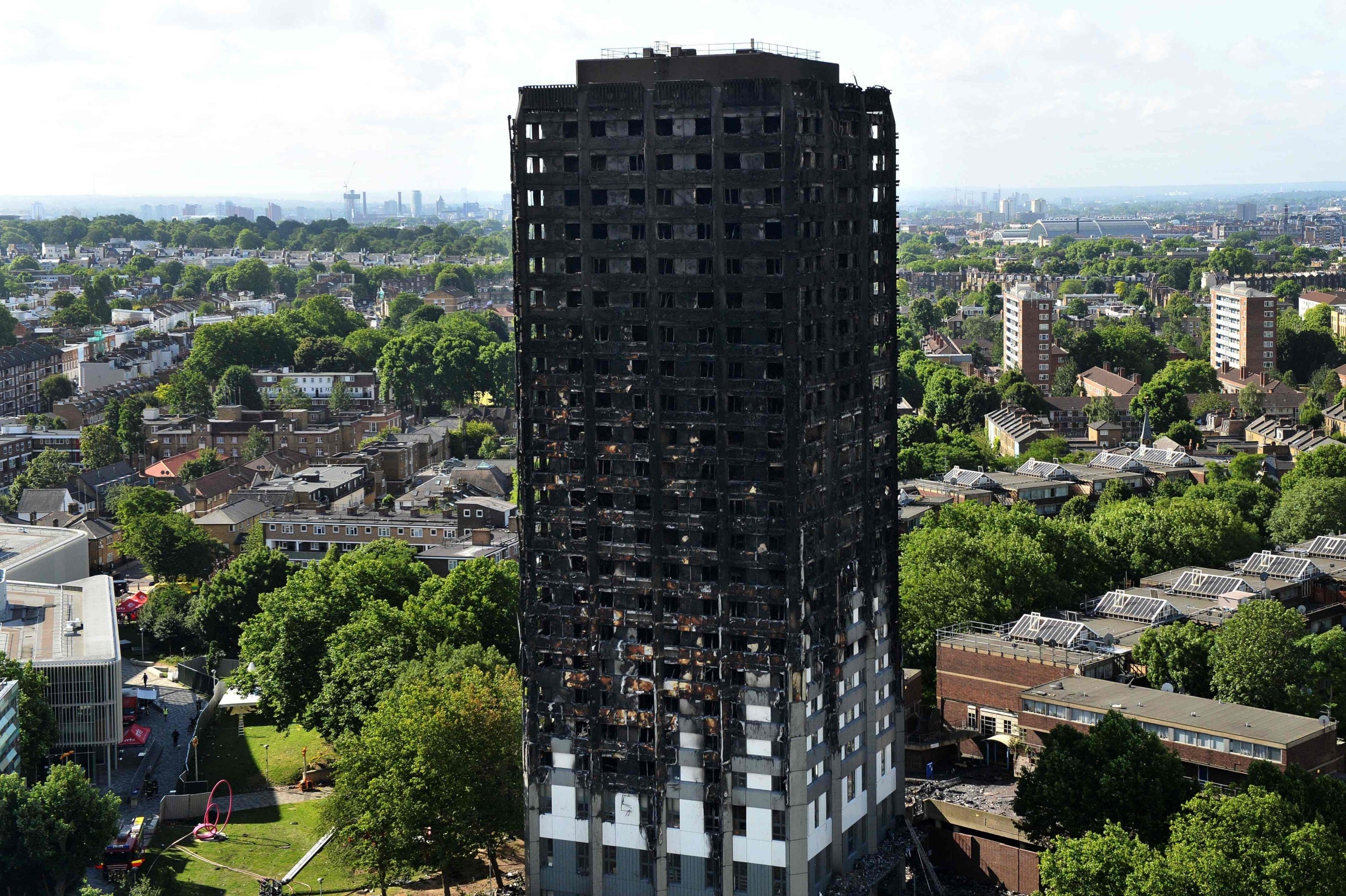Grenfell tower fire: 56,000 'still at risk' from flammable cladding three years on
Exclusive: Labour Party demands sanctions against private landlords who fail to remove combustible materials
Three years on from the Grenfell Tower fire, some 56,000 people are still living in buildings with flammable cladding responsible for the disaster, according to new analysis.
The Labour Party said that if other types of cladding identified as a fire risk are removed at the same rate, it will be almost 40 years before the task is completed.
As survivors prepared to mark the grim anniversary on Sunday, shadow housing secretary Thangam Debbonaire said it was a “national disgrace” that almost three-quarters of those who woke up the morning after the tragedy to the realisation that their homes were potential death-traps were still waiting for the cladding to be removed.
A survey of 550 residents, carried out by the UK Cladding Action Group (UKCAG) earlier this month, found that 14.5 per cent of affected leaseholders have had suicidal thoughts and 8 per cent have felt compelled to self-harm. More than three-quarters (77.8 per cent) said their mental health has been “hugely affected” by cladding issues.
Labour is calling on ministers to take enforcement action against building owners who fail to make blocks safe.
And the party is demanding financial support for residents who are left paying as much as £840 a month for “waking watch” services to provide them with reassurance that they will be alerted if a blaze breaks out while they sleep.
Some 72 people died when fire tore through the 24-storey block of flats in west London on 14 June 2017. The fire began in a faulty fridge-freezer on the fourth floor but spread rapidly up the recently-renovated building’s exterior.
The report of a public inquiry into the fire, released last October, said it was “clear” that flames and smoke were able so swiftly to engulf the building because of the use of combustible ACM cladding and insulation.
The government has provided £600m to remove and replace ACM systems from social housing and private properties. And on 1 June, registrations opened for a £1bn Building Safety Fund to deal with unsafe non-ACM cladding from buildings over 18m in height.

But official figures released last week showed that the government had missed its own June 2020 deadline to remove all Grenfell-style cladding from buildings.
By 31 May, some 155 high-rise residential and publicly-owned buildings in England had completed the removal and replacement of ACM panels – an increase of six since the previous month.
But 300 with ACM cladding systems unlikely to meet building regulations remained to be dealt with. Work has started on 140 of these, including 54 which have had cladding removed.
Blocks awaiting work were concentrated in cities such as London, Greater Manchester, Leeds and Liverpool.
Labour’s analysis of the official figures identified a total of 361 residential blocks with ACM cladding – 154 in the social housing sector and 207 privately owned or rented.
Of these, 257 – 71 per cent of the total – are still to be made safe, 79 of them social homes and 178 private. Between them these towers contain 23,600 flats, housing an estimated 56,640 people, said Labour.
The total was only 4,000 fewer than at the time of similar analysis last year.
And the party calculated that blocks have been made safe at an average rate of 3.63 per month in the three years since the Grenfell fire.
At this rate, it would take 39 years to deal with the 1,700 further buildings said by ministers to be covered with other types of non-ACM flammable materials, such as high-pressure laminate boards which are made from paper and resin.
In a report released on Friday, the cross-party House of Commons Housing Committee said it was “deeply shocking and completely unacceptable” that so many buildings are potentially at risk so long after the Grenfell fire, and urged ministers to take over residential tower blocks if owners fail to remove dangerous cladding.
The committee found that while private owners have a legal duty to ensure the work is done, they usually do not have a duty to pay for it, and in many cases are passing on bills of “life-changing” magnitude to leaseholder residents.
Ms Debbonaire said: “Three years on from the Grenfell tragedy, it is a national disgrace that so many people are still living in the shadow of deadly flammable cladding.
“Ministers have missed their own deadline for cladding removal and must now take the enforcement action they promised to make buildings safe.
“Grenfell-style cladding is just the tip of an iceberg. At the current pace it could take decades to end the cladding scandal. This vital work must speed up. It is a matter of life and death.”
In response, a government spokesperson said: “The safety of residents is our top priority and since the Grenfell Tower fire we have worked tirelessly with councils to identify buildings at risk and ensure they are made safe.
“We are providing £1.6bn for the removal and replacement of unsafe cladding from high-rise buildings and are bringing forward the biggest legislative changes in a generation to provide further enforcement powers against those who do not comply with the law and ensuring that residents’ safety is at the heart of the construction process.
“Building owners have a legal responsibility to keep their residents safe and whilst we have seen positive action from some, we are clear that more needs to be done to protect their tenants.”
Join our commenting forum
Join thought-provoking conversations, follow other Independent readers and see their replies
Comments
Bookmark popover
Removed from bookmarks